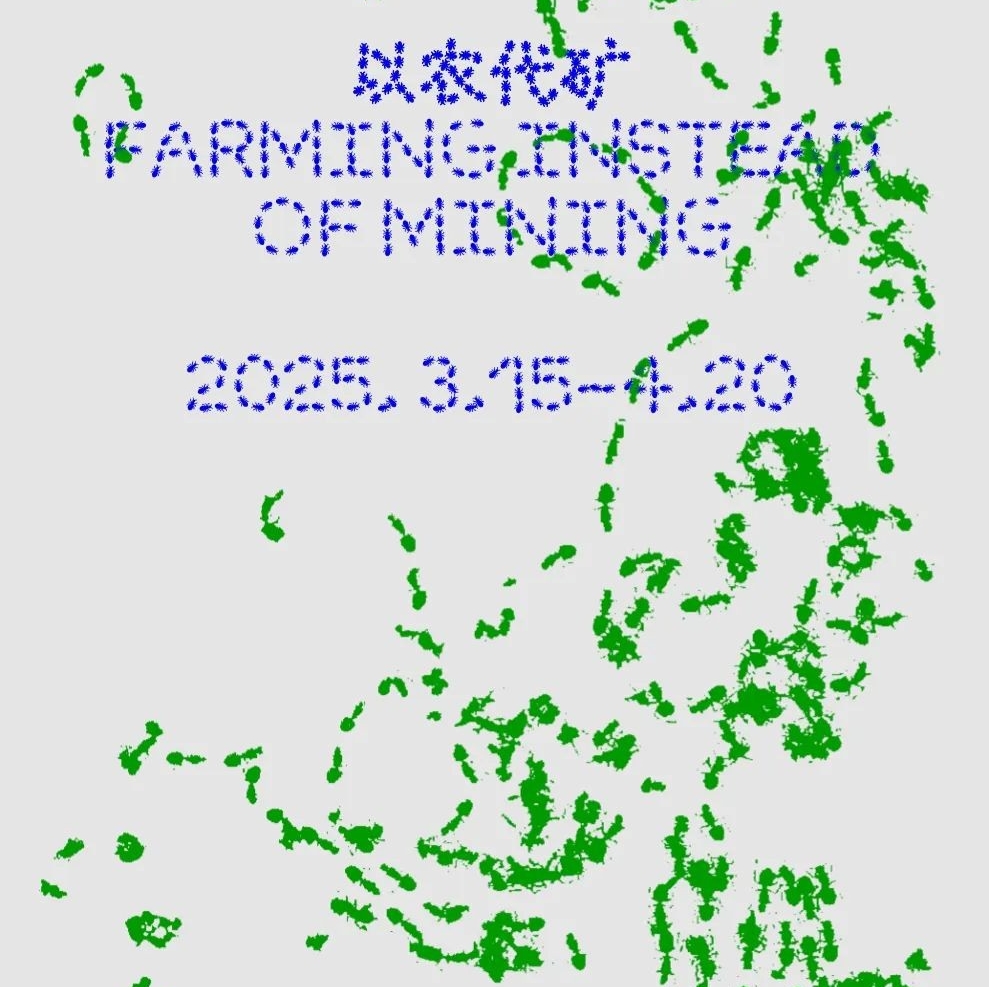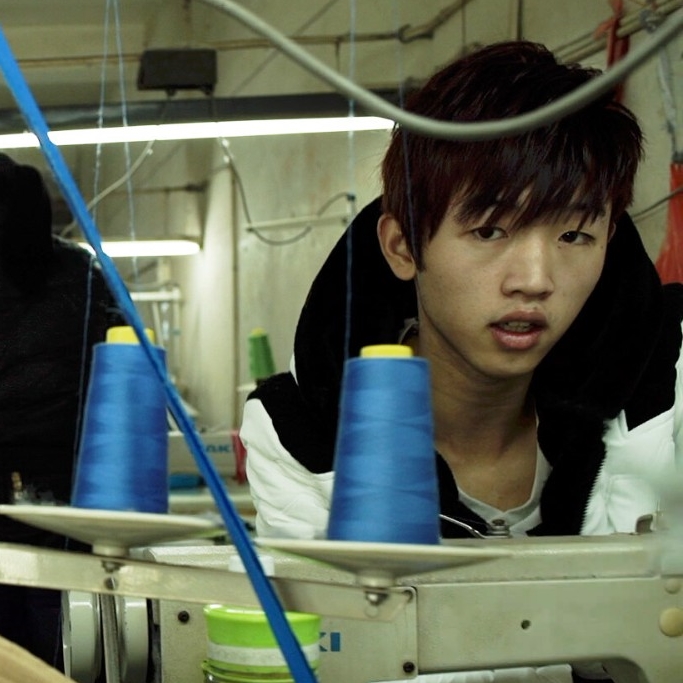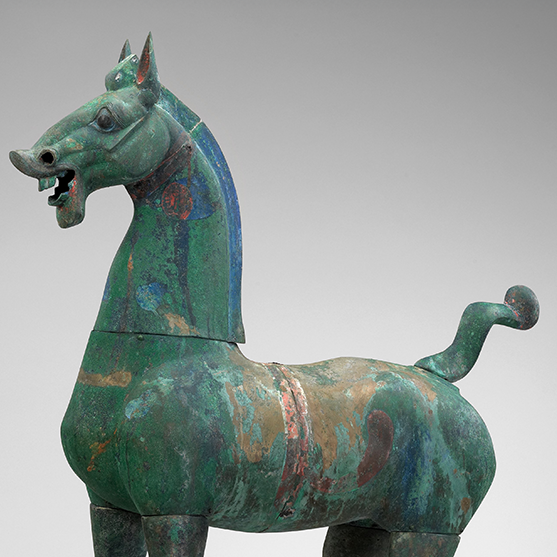 Liu Ye, Jorge Luis Borges, (2022-2023). Courtesy David Zwirner.
Liu Ye, Jorge Luis Borges, (2022-2023). Courtesy David Zwirner.
David Zwirner announces an exhibition of recent paintings by Chinese artist Liu Ye, on view at the gallery’s London location. This will be the artist’s second solo presentation with the gallery and the first time his work has been shown in London since 2002.
In his deeply meditative paintings, Liu investigates the intersections of history and representation through a distinct vocabulary that transcends time and place, evoking distinct conceptual and emotional registers of meaning. Carefully balanced and lushly rendered, his works encompass a diverse range of aesthetic and cultural sources. Drawing on both his childhood memories and his early education in Europe, Liu captures the likenesses and legacies of authors such as Vladimir Nabokov, Hans Christian Andersen, and William Shakespeare; twentieth-century Chinese cultural icons, including actress Ruan Lingyu and writer Eileen Chang; and modernist painters, architects, and designers, from the Bauhaus to Balthus. These various points of reference have inspired Liu’s paintings for more than thirty years, resulting in a body of work that is at once rich in its historical quotations and singularly his own.
The exhibition—the title of which playfully references composer John Adams’s 1999 symphony Naive and Sentimental Music, itself an allusion to Friedrich Schiller’s 1795–1796 essay “On Naive and Sentimental Poetry”—examines the art-historical legacy of portraiture and the formal possibilities and nuances of the painted surface. Showing a technical sophistication that rivals the precise brushwork and paint handling of European old masters such as Jan van Eyck and Antonello da Messina, the intimate, starkly lit works on view mark a new turn in Liu’s style toward a mode of naturalistic portraiture that is meticulous yet multivalent, introspective yet expansive. Each painting may be considered a kind of self-portrait—even as none of these works depict the artist himself. Liu’s exquisite attention to detail and verisimilitude reveals his considered reverence toward his subjects, with whom he always feels a profound personal connection, as well as to the medium of painting.
Synthesising divergent artistic genres, time periods, and modes of representation, Liu’s paintings of portraits simultaneously invoke and destabilise their own formal and conceptual traditions. Fastidiously rendered over months, sometimes years, these works evince the artist’s unique ability to atomize stroke and surface into an unexpected kind of abstraction, even when depicting subjects in a highly naturalistic figurative manner. As Liu describes: “To make a painting takes a long time: the more it takes, the more things become visible. To reduce unnecessary elements is an even longer process. As time passes, the edge becomes more and more clear—the edge of everything. This is a theme on itself. The edge is always dangerous, as a person standing on the edge of a cliff.”1
The paintings on view run the gamut of Liu’s varied interests, from literary and artistic inspirations to his family and pets. In Who Is Afraid of Madame G, the artist’s wife looks at a painting from colour field pioneer Barnett Newman’s four-part cycle Who’s Afraid of Red, Yellow and Blue (1966–1970), her upturned head framed against a royal blue background, bordered by strips of red and yellow. Beyond the reference to Newman’s series, this work engages a lineage of artistic inspiration tracing back to the modernist geometries of Piet Mondrian and to John Singer Sargent’s Portrait of Madame X (1883–1884). In his depiction of Jorge Luis Borges, himself a master of overlapping and layered references, Liu paints the Argentine writer from the shoulders up, offsetting his wrinkled visage and piercing gaze against a single-colour background with similarly Newman-esque vertical bars.
In a suite of haunting chiaroscuro paintings, Liu portrays actress Maggie Cheung as Su Li-zhen, the lonesome heroine of Hong Kong director Wong Kar-wai's atmospheric film In the Mood for Love (2000) and its spiritual predecessor Days of Being Wild (1990). In another work, Miffy the cartoon rabbit—one of Liu's most enduring subjects—gazes pensively at the viewer, her flop-eared head tilted to one side. Two paintings of orchids are stylistically modelled after Karl Blossfeldt’s photographs of flowers and plant life, a recurring source of imagery for Liu, previously explored in his series of Book Paintings. While Liu’s earlier works re-created entire photographic spreads from Blossfeldt’s 1928 volume Urformen der Kunst (published in English as Art Forms in Nature), here he paints flowers directly from life, enacting a conceptual investigation of portraiture and objecthood. A final trio of paintings shows Liu’s Akita, Phoebe, and his cat, Nao Nao; both pets are presented here in regal profile, imbuing a normally quotidian subject with a solemn gravitas reminiscent of ancient Egyptian reliefs and eighteenth-century British equestrian portraits.
About the Artist
Liu Ye (b. 1964) studied mural painting at the Central Academy of Fine Arts and industrial design at the School of Arts & Crafts, both in Beijing, before studying at the Hochschule der Künste in Berlin. The artist spent six years living and studying in Europe, which included a six-month-long residency in 1998 at the Rijksakademie in Amsterdam. The artist’s first exhibition with David Zwirner, Liu Ye: The Book and the Flower, was on view in 2020 at the gallery’s East 69th Street location in New York.
In 2021–2022, Liu Ye: Pierre Menard was on view at the New Century Art Foundation, Beijing. Liu Ye: Storytelling opened at Prada Rong Zhai, Shanghai, in 2018, and travelled to Fondazione Prada, Milan, where it was on view in 2020–2021. Other solo museum presentations include shows at Mondriaanhuis, Amersfoort, The Netherlands (2016); and Kunstmuseum Bern, Switzerland (2007).
In 2017, Liu’s work was included in the 57th Venice Biennale as part of Viva Arte Viva, curated by Christine Macel, director of the biennale and chief curator at the Centre Pompidou, Paris. Liu’s work has also been featured in significant international group exhibitions, including Common Ground: UCCA 15th Anniversary Patrons Collection Exhibition, UCCA Center for Contemporary Art, Beijing (2022); Hello World: Revising a Collection, Hamburger Bahnhof – Museum für Gegenwart, Berlin (2018); The World in 2015, Ullens Center for Contemporary Art, Beijing (2015); Focus Beijing: De Heus-Zomer Collection, Museum Boijmans Van Beuningen, Rotterdam (2014); Re-View: Opening Exhibition of Long Museum West Bund, Long Museum, Shanghai (2014); In Time, 5th Chinese Oil Painting Biennale, National Art Museum of China, Beijing (2012); Future Pass: From Asia to the World, 54th Venice Biennale (2011; travelled to Wereldmuseum, Rotterdam; National Taiwan Museum of Fine Arts, Taichung; and Today Art Museum, Beijing); Chinamania, Arken Museum of Modern Art, Ishøj, Denmark (2009); and Mahjong: Contemporary Chinese Art from the Sigg Collection, Berkeley Art Museum and Pacific Film Archive, University of California, Berkeley (2008; travelled to Peabody Essex Museum, Salem, Massachusetts).
Work by Liu is held in numerous public collections, including the Long Museum, Shanghai; M+ Sigg Collection, Hong Kong; Museum of Art Pudong, Shanghai; Shanghai Art Museum; Today Art Museum, Beijing; and Yuz Museum, Shanghai. Liu lives and works in Beijing.
1 Liu Ye, Storytelling: Liu Ye. Exh. cat. (Milan: Fondazione Prada, 2020), p. 1.
About the Exhibition
Dates: October 10—November 18, 2023
Venue: David Zwirner
Location: 24 Grafton Street, London
Courtesy of the artist and David Zwirner.




























